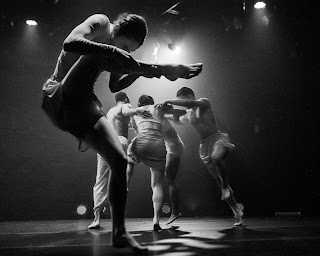LIKE WATER FOR CHOCOLATE Review by Celia Ipiotis

Cinematic designs and set changes saturate Chirstopher Wheeldon's evening length ballet For Water Like Chocolate based on the 1989 book of the same name by Laura Esquivel. Sweeping across several generations, the tangled web of shattered love, broken families, old crones and specters adds to the visual luster. Framed by both naturalistic and surrealistic sets by award-winning theater designer Bob Crowley and sinuous lighting by Jody Talbot Like Water for Chocolate demonstrates Wheeldon's ability to transfer story ballets to the level of Broadway theatrics for American Ballet Theater at the Metropolitan Opera House. A string of white dressed brides holding bright red flower bouquets in their laps transform into black garbed women in mourning. This Greek chorus of women in black remains a recurring theme throughout the ballet, foreshadowing dark events. My first introduction to the ballet featured a dancer unknown to me, SunMi Park. Only recently promoted to the role of...




